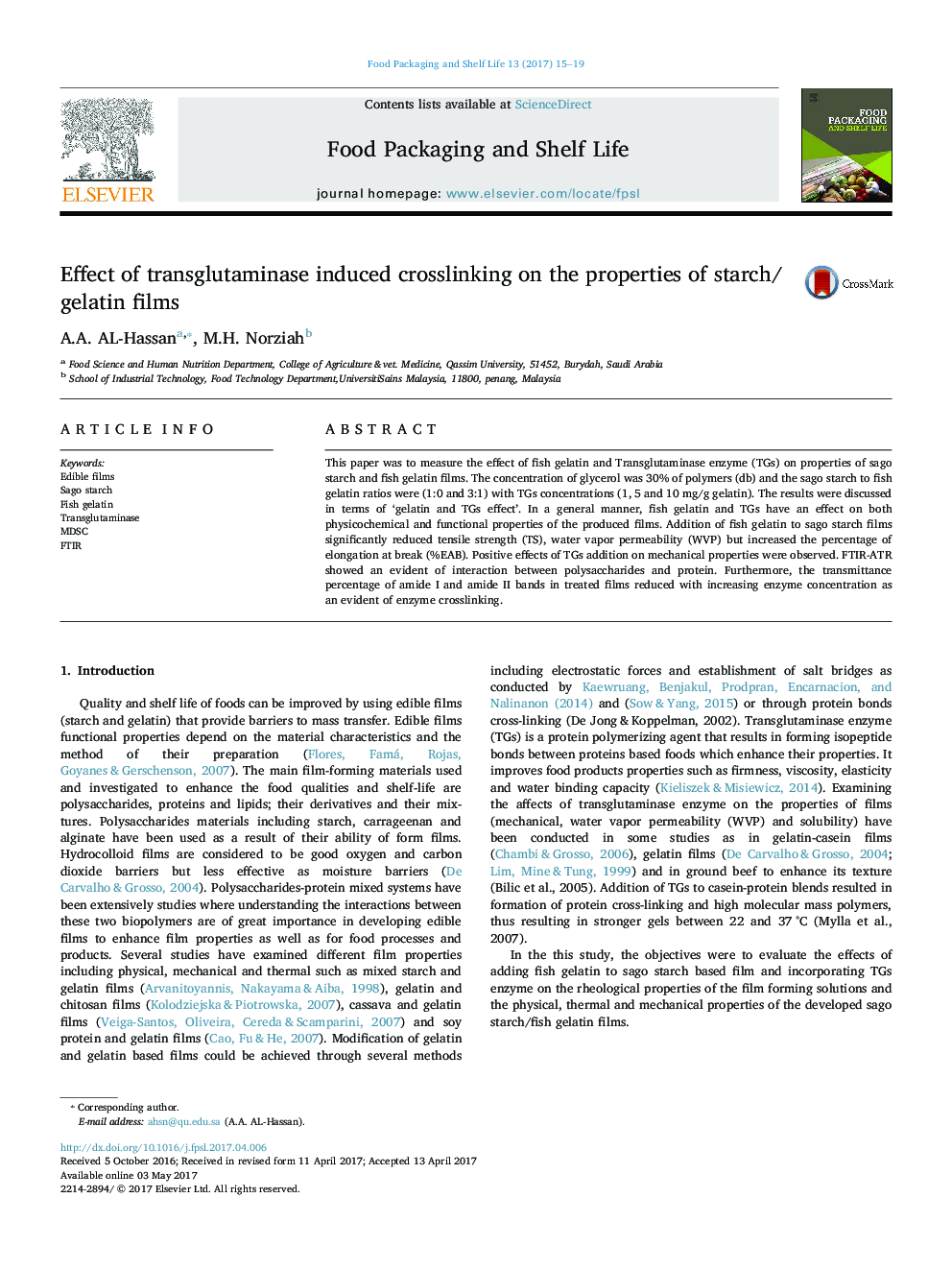| Article ID | Journal | Published Year | Pages | File Type |
|---|---|---|---|---|
| 4753114 | Food Packaging and Shelf Life | 2017 | 5 Pages |
â¢Transglutaminase enzyme has an effect on physicochemical and functional properties of the films.â¢Fish gelatin significantly reduced water vapor permeability (WVP), tensile strength (TS) but increased percentage of elongation at break (%EAB).â¢FTIR-ATR showed an evident of interaction between polysaccharides and protein.â¢FTIR-ATR showed reduced transmittance percentage of amide I and II bands in treated films with increasing enzyme concentration as an evident of enzyme crosslinking.
This paper was to measure the effect of fish gelatin and Transglutaminase enzyme (TGs) on properties of sago starch and fish gelatin films. The concentration of glycerol was 30% of polymers (db) and the sago starch to fish gelatin ratios were (1:0 and 3:1) with TGs concentrations (1, 5 and 10Â mg/g gelatin). The results were discussed in terms of 'gelatin and TGs effect'. In a general manner, fish gelatin and TGs have an effect on both physicochemical and functional properties of the produced films. Addition of fish gelatin to sago starch films significantly reduced tensile strength (TS), water vapor permeability (WVP) but increased the percentage of elongation at break (%EAB). Positive effects of TGs addition on mechanical properties were observed. FTIR-ATR showed an evident of interaction between polysaccharides and protein. Furthermore, the transmittance percentage of amide I and amide II bands in treated films reduced with increasing enzyme concentration as an evident of enzyme crosslinking.
